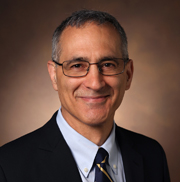Lungs are the least-used solid organ for transplant because 80% of donor lungs are too damaged to be considered for transplantation. But a new technique demonstrated by Matthew Bacchetta, MD, MBA, associate professor of Thoracic Surgery, shows the potential to increase the supply of donor lungs by rehabilitating those organs previously considered too damaged for transplant. That may mean the difference between life and death for people waiting for donor lungs.
In a study published recently in The Journal of Thoracic and Cardiovascular Surgery, Bacchetta and colleagues at Columbia University demonstrated that lungs could be supported for up to four days using cross-circulation from an animal model, which is the longest duration of support yet demonstrated worldwide. The method resulted in significantly improved lung function and cellular regeneration and allowed researchers to develop diagnostic tools for non-invasive organ evaluation and repair.

The longer lungs can be supported, the longer doctors can work to rehabilitate them. Using novel interventional techniques developed in his lab, Bacchetta and colleagues have already more than doubled the time that lungs could be supported from even a year ago. They previously demonstrated that lungs could be supported for 36 hours in a study published last year in Nature Communications.
Prior to the novel technique, methods of preserving lungs only gave doctors about six hours to assess them, which is insufficient time to rehabilitate lungs with severe but reversible injury, Bacchetta said.
“One of our initial goals was to build organ support systems that extended this time from hours to days,” he said. “Changing the metric of time enables the regeneration of injured tissue and provides research avenues for efforts in areas such as cellular manipulation and immunomodulation.”
As Bacchetta and his colleagues refine the new technique, Bacchetta foresees expanding the time to work on organs — even to weeks. That will allow much more time to not only rehabilitate organs, but explore new techniques of repairing them through bioengineering solutions.
Further study will be required to determine how well such rehabilitated lungs function, the safety of the method and how such lungs respond to immunosuppressive drugs that are given after transplantation. Bacchetta and his colleagues are also studying its use for other damaged organs — such as hearts, kidneys and livers — to potentially expand the pools of those donated organs as well.
“Dr. Bacchetta and his team continue to perform groundbreaking research to help patients with lung disease,” said Seth Karp, MD, H. William Scott Jr. Professor, chair of the Section of Surgical Sciences and director of the Vanderbilt Transplant Center. “This current work provides a uniquely powerful platform not only to improve lung transplantation but also to allow unprecedented ability to study a wide range of possible therapies for a broad group of diseases.”












